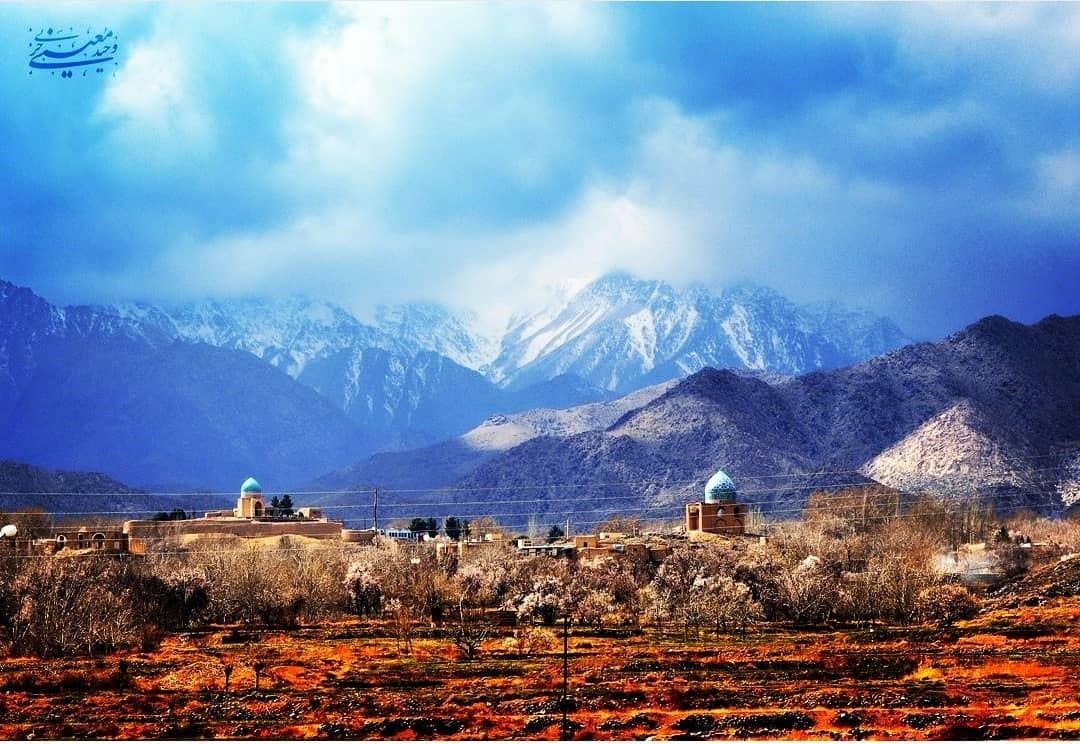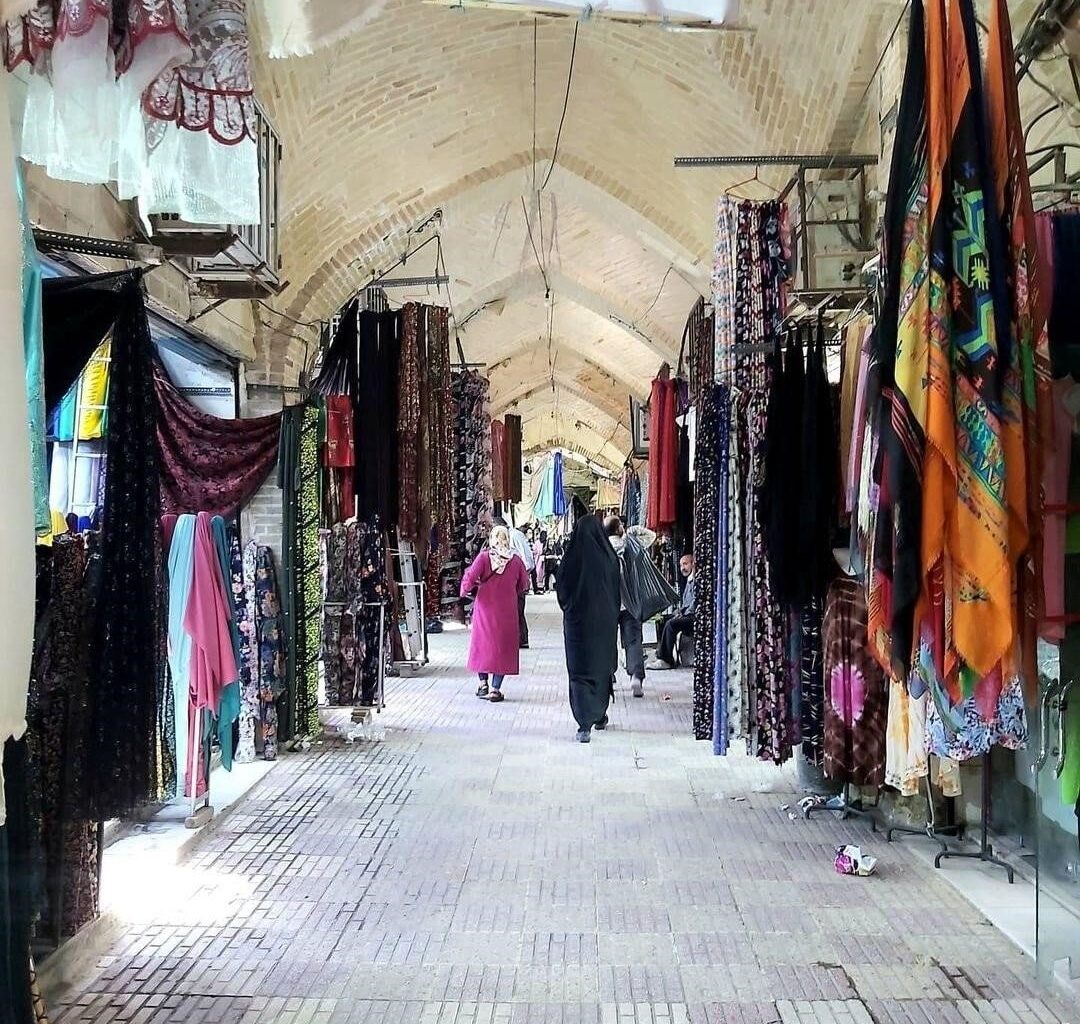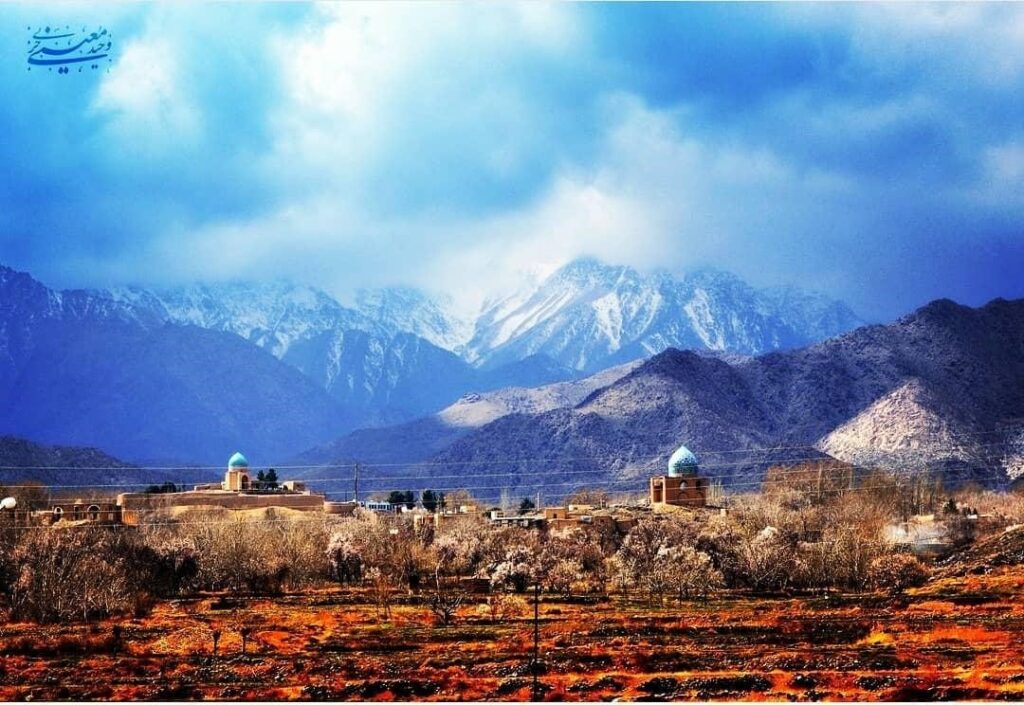
Natanz is one of the very old cities in Iran’s Isfahan province, which is located at the foothills of the Karkas (Vulture) Mountain. The mild climate of Natanz has made it a pleasant habitat for many people since ancient times. That’s why there are ancient neighborhoods from long-gone historical eras that stand out in Natanz City. One of the most beautiful neighborhoods of this city is the Afushteh neighborhood or Afooshteh neighborhood which houses several magnificent historical monuments in its heart.
Afushteh neighborhood is located in the southeast of Natanz. This neighborhood is called Afushteh Complex because it contains 9 unique historical monuments. It is considered one of the main Natanz Tourist Attractions. You can find multiple historical monuments from different periods located a few meters apart.
These 9 historical monuments in the Afushteh neighborhood are Surgah House, Tomb of Seyyed Hassan Waqif, Mir Seyyed Waqif Tomb, Hammam (traditional bathhouse), Sharbat Khaneh (serving traditional syrup drinks), Ab Anbar (Cistern or water reservoir), Jameh Mosque of Afushteh, Afushteh Hosseiniyeh, and Khanqah Hosseini. The variety of the monuments shows that the Afushteh neighborhood was a busy and crowded area in the past.
It contains various historical monuments from different periods.
Surgah House, Natanz Afushteh Neighborhood
Surgah House dates back to the Timurid period. It is located on a hill overlooking Hussainiya. This house is adjacent to Afushteh Hussainiya from the north and east, the reservoir from the south, and green gardens from the west.
Since the house is built on a stone foundation, it has adequate durability. In addition, the interior decorations of the house are exceptional, a form of Rasmi Bandi (geometric patterns). The building’s elegance had made it a venue for welcoming special guests in the past. Surgah House was registered in the Iran National Heritage List in 2003.
Tomb of Seyyed Hassan Waqif
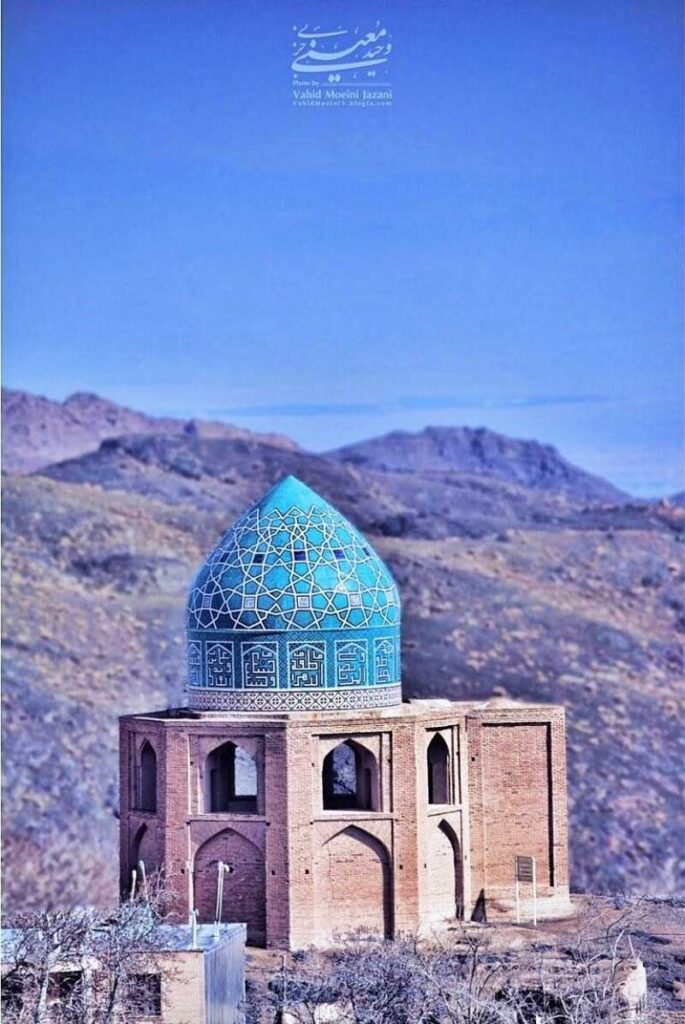
This tomb is actually a mausoleum that was built by someone named Seyyed Waqif in the 15th century. He built this mausoleum for himself at the age of 42, which would later be the place for his eternal rest.
This mausoleum has a high tower with an octagonal base. There is a turquoise-colored double-shell dome (with inner and outer domes) on this octagonal tower.
The dome is made of bricks and there is no trace of tilework and plasterwork decorations on it. There is an inscription of the word Allah in the Kufic script on the lower part of the dome.
Each of the sides of this octagonal tomb has a length of about 3.57 meters and all the sides have a false arch with a decorated keel vault. In addition, the tomb has a 7-meter-high Iwan (porch) with dimensions of 2.5×3 meters.
Mir Seyyed Waqif Tomb
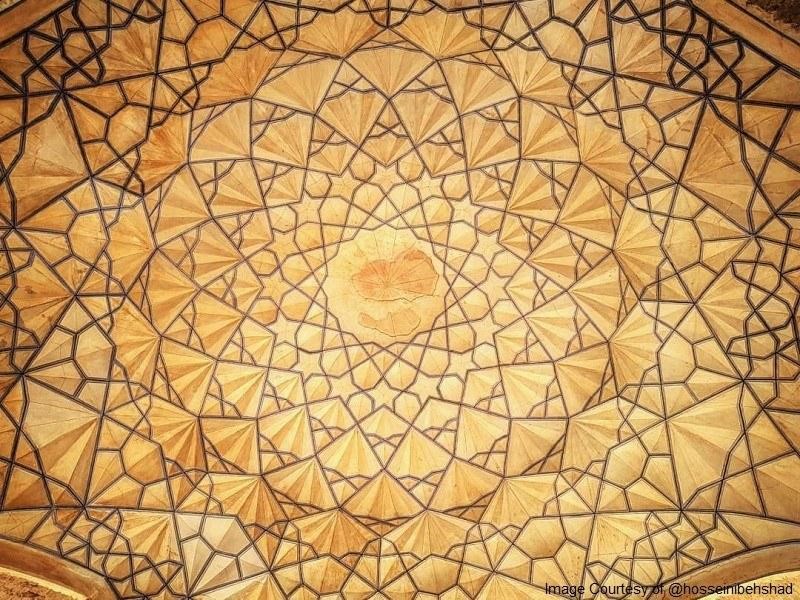
This mausoleum is built on a low hill and is located between the Mir Seyyed neighborhood and the Diz-ab neighborhood. The mausoleum was built in the 15th century AD and is located in the northeast of the Afushteh neighborhood.
The tomb has two floors, and the outer sides of the octagonal mausoleum of Mir Seyyed Waqif are 4.9 meters long. There are 8 cloisters on each floor, and the cloisters on the upper floor are linked via the covered Gholam-Gard passages(Ambulatory).
In addition, the tomb dome is decorated with turquoise-colored tilework with geometric shapes. There is an inscription on the dome drum with the names of the twelve Shia Imams engraved in a large Kufic script. This tomb was registered in the Iran National Heritage List in 1974.
Afushteh Neighborhood Hammam
Afushteh traditional bathhouse was built by Seyyed Waqif in the 15th century. This Hammam has a staircase landing before the entrance and two platforms on the sides for seating. There is a stone inscription in front of the Hammam entrance portal.
The bathhouse level is lower than the street level. Therefore, the alley is connected to the Hammam via a few downward steps. In addition, the Afushteh Bathhouse has a small vestibule that leads to the main Hammam area.
After passing through the entrance portal and entering the bathroom, the Shahneshin Soffeh (elegant private baths) of this part attracts our attention. There are three Soffeh in this bathhouse and they are located on three corners of the Hammam, in the vicinity of the Rakhtkan or dressing area. The southwest Soffeh is 50 cm higher than the bathroom floor.
There is a shallow pool with a fountain in the middle of the three elegant private baths. In addition to this pool, there are two other pools in different parts of the Hammam. The central pool is in the shape of an octagon and has more vertices than other pools. The other two pools have a hexagonal shape.
The bathhouse ceiling is covered with domed barrel vaults. Due to its unique features, this bath was included in the National Heritage List of Iran in 1995.
Sharbat Khaneh (Traditional Soda Shop)
This building was built in the Timurid period and was a two-story building in the past, and there was a dome covering the second floor. The second floor has been demolished over time.
The Sharbat Khaneh in the Afushteh neighborhood is a building with a square central area. There are two 8-sided squinches and two 6-sided squinches in the four corners. There are 4 Iwans on four sides of the building that are designed with the principle of symmetry.
Afushteh Ab Anbar (Cistern)
This building features a Roman vault with a height of 8.4 meters with a 5-meters span. There are two marble platforms with dimensions of 2.75 x 0.67 and a height of 95 cm on the two sides of the Ab Anbar.
In addition, this cistern has 33 stone steps, a drum less dome, and two wind catchers. The wind catchers of this building are near collapse and have partially crumbled.
Jameh Mosque of Afushteh
This mosque was built in the early 15th century with materials such as adobe, brick, and plaster, and it does not feature any decorations.
Afushteh Hussainiya
The Hosseinieh or Hussainiya is located in Afushteh neighborhood. It has a square plan with an area of approximately 835 square meters, built in the Qajar period.
Khanghah Hosseini (Monastery)
In the past, this monument was the personal house of Seyyed Waqif, who built it in 1446 AD. He endowed this house for public benefit in 1453 along with his other possessions and named it Khanqah Hosseini.
Visit Afushteh Neighborhood Historical Attractions
Natanz Afushteh neighborhood is one of the most visited neighborhoods in the city because it features 9 outstanding historical monuments. Many domestic and foreign travelers visit Natanz to see the 9 monuments of the neighborhood.
If you happen to pass through Natanz on an Iran tour package or by yourself, don’t miss visiting the monuments in this neighborhood. Destination Iran has introduced many historical monuments of Natanz City and invites you to visit 9 monuments in Afushteh Neighborhood.
Where is the Afushteh Neighborhood in Natanz?
Afushteh Natanz neighborhood is located in the southeast of Natanz and in the vicinity of its delightful nature. It contains various historical monuments from different periods. Below you can see the exact location of the historical bath of this city:
Frequently Asked Questions About Afushteh Neighborhood
If you cannot find the answer to your question here, leave us a comment in the comment section below this post and ask your question. We will answer it as soon as possible.
How far is the distance between Natanz City and Isfahan City?
There are two common routes for traveling to Natanz from Isfahan. Both routes are about 135 km long and take roughly 1 hour and 40 minutes to traverse.
What are the historical monuments in Natanz Afushteh neighborhood?
Surgah House, Tomb of Seyyed Hassan Waqif, Mir Seyyed Waqif Tomb, Hammam (traditional bathhouse), Sharbat Khaneh (serving traditional syrup drinks), Ab Anbar (water reservoir), Jameh Mosque of Afushteh, Afushteh Hosseiniyeh, and Khanqah Hosseini.
Which Natanz attractions are registered in the Iran National Heritage List?
Jameh Mosque of Natanz, Taj Abad Palace, Tarqrud Castle and Afushteh Hammam.
Is it possible to camp in parks across Natanz City?
Yes, the most common parks for camping accommodation are Laleh Park, Neshat Park, Van Jungle Park, Sarcheshmeh Sareban Park, Mellat Park, Sarcheshmeh Park, 9 Dey Park, and Shahrebazi Park.
What season is the best time to travel to Natanz?
The best time to travel to Natanz is in the spring. But the villages around Natanz are also spectacular during spring and summer.
What are the most famous Natanz handicrafts?
Some of the handicrafts of Natanz City include pottery, ceramics, carpet weaving, handmade rugs, Woodturning, and traditional blacksmithing.
What are the common language and traditions of the Natanz population?
The main language spoken in Natanz is Persian, which is spoken in an older dialect. Villagers can recognize a person’s village of origin by their dialect. In the villages of Tar, Tarq, Kasheh, and Chimeh, people still speak the Razi dialect, which is a dialect of old Persian. The people of Natanz still follow ancient traditions and ceremonies and celebrate them in special festivals.






